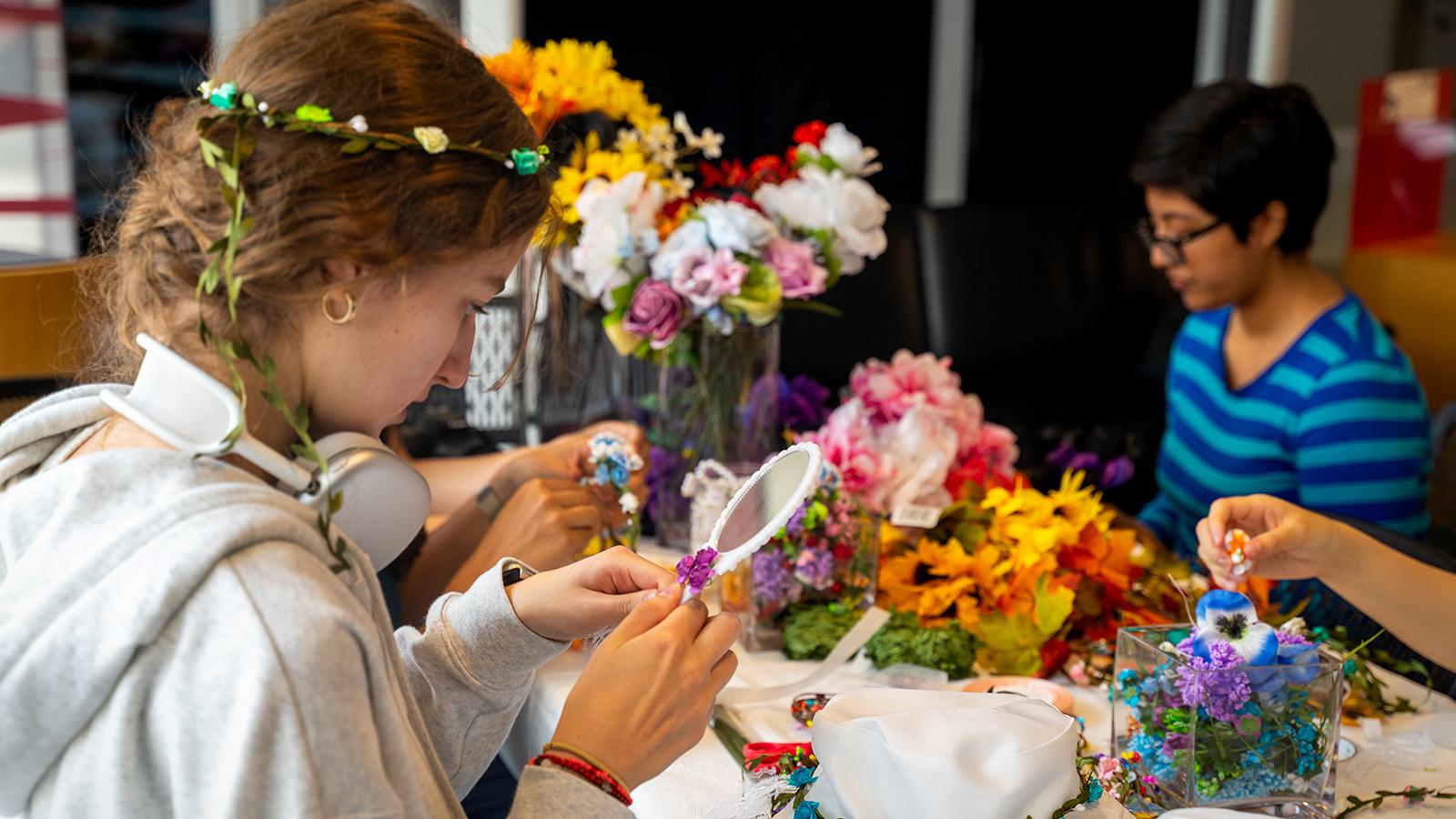This fall, the Davis Museum’s new exhibition Rory McEwen: A New Perspective on Nature, which opens September 26, is attracting interest from every corner of campus.
“We’re finding all kinds of interdisciplinary connections that we’re super excited about,” says Amanda Gilvin, interim co-director of the Davis Museum, Sonja Novak Koerner ’51 Senior Curator of Collections, and associate director of curatorial affairs. Rory McEwen (1932–1982), a Scottish artist famous for his stunningly hyperrealistic and vibrant illustrations of plants, was himself an interdisciplinary kind of guy—at different times throughout his life he was a musician, a television personality, a painter, and a naturalist.
This exhibition at the Davis has been in the works for over a decade. After its original installation at the Royal Botanic Gardens, Kew in London in 2013, A New Perspective on Nature was shaped into a travel exhibition, which was delayed due to COVID-19. But thanks to the support of Wellesley trustee emerita Laura Daignault Gates ’72, former Wellesley trustee Sir Peter Crane, past director and chief executive of Kew who is now president of the Oak Spring Garden Foundation in Virginia, and Dame Amelia Chilcott Fawcett DBE ’78, chair of the board of trustees of Kew, the 85 watercolors on vellum and paper have finally made their way to the walls of the Davis.
The exhibition includes works from throughout McEwen’s life, juxtaposed with the works of 17th- and 18th-century artists who influenced him and contemporary artists who continue his legacy.
“It’s really fascinating to see this contemporary artist, a Scottish artist, in the mid-20th century, in these waning years of the British colonial project, return to this genre and analyze the shifting meanings of plants in the world from that perspective as well,” says Gilvin.
Gilvin says she is thrilled that groups from across campus will be participating in museum programming this fall. The Davis will be hosting events in collaboration with the College’s Botanic Gardens and the Paulson Ecology of Place Initiative, as well as the biology, chemistry, art history, and art departments.

On October 21, Jing-Ke Weng, inaugural director of the Institute for Plant-Human Interface at Northeastern University, will deliver a lecture, “Decoding the Chemical Language of Plants,” at Collins Cinema. Jill Burke, historian and author of How to Be a Renaissance Woman: The Untold History of Beauty and Female Creativity, will host an October 24 webinar titled “Renaissance Women and the Power of Plants.” Samara Pearlstein, whose many roles at the College include program coordinator for the art department and drawing instructor for the studio program in the summer, will host two workshops on botanical illustration. The Davis Museum shop will stock Botany of Empire: Plant Worlds and the Scientific Legacies of Colonialism, a new book by Banu Subramaniam, Luella LaMer Professor of Women’s and Gender Studies and chair of the Department of Women’s and Gender Studies at Wellesley. Subramaniam writes about the history of botany, which she demonstrates was invented to support European colonial rule, and proposes more inclusive visions of the field.
McEwen’s work also makes for a wonderful excuse to celebrate the natural world: For the opening reception, attendees are encouraged to wear an outfit in honor of their favorite flower or plant.
Several new works in rotation in the long-term galleries will complement the McEwen exhibition and emphasize other interdisciplinary and cross-cultural connections, Gilvin says. An impressionistic painting by the Vietnamese artist Lê Phổ, of a woman sitting beside a vase of flowers, is on loan from the TJX Companies, Wellesley’s neighbors down the street in Framingham. Ceramic works featuring animals and plants from the newly acquired bequest of Wellesley trustee emeritus Sydney R. Knafel pepper the cases. Gilvin and her colleagues have pulled out the College’s Jacob Hoefnagel prints depicting realistic animal and plant life that the Davis has used in some of its own branding, and Marie Flon, the 2024 Liliane Pingoud Soriano ’49 Curatorial Fellow at Wellesley, has curated a selection of detailed prints of the bodies of pregnant women that were used to illustrate medical textbooks.
Whether you are approaching the Davis with an artistic or a scientific eye, or both, the museum has something for you this semester—and every semester.
“The Davis is a place for students of all majors,” says Gilvin.
